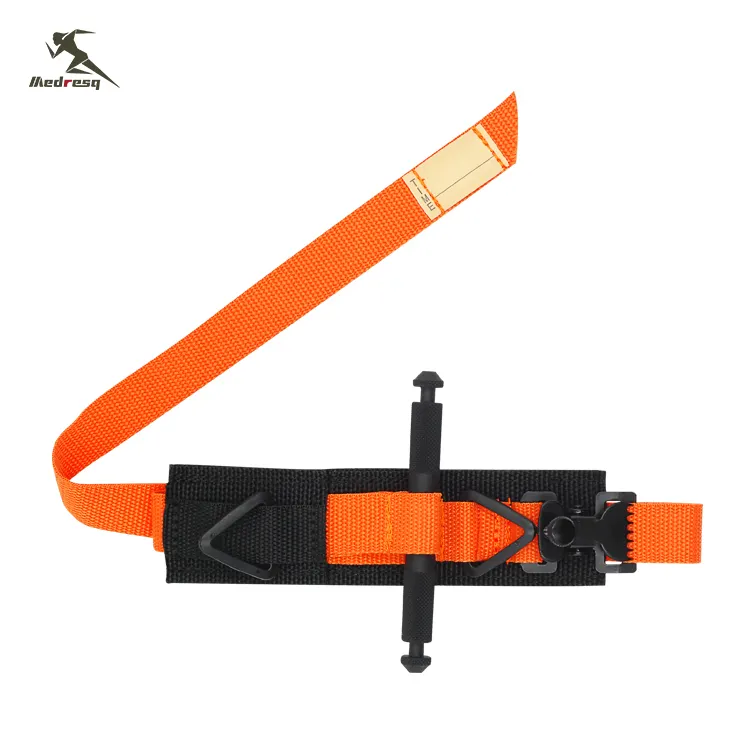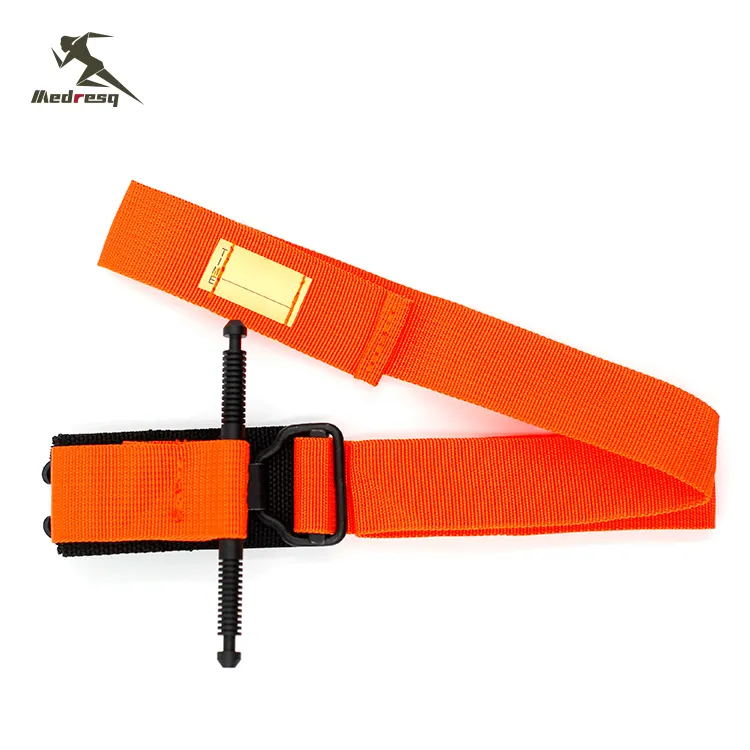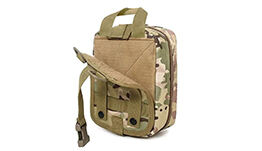The Windlass Rod Tourniquet: A Lifesaving Device in Emergency Medical Response
In critical trauma situations, time is of the essence. Every second counts when dealing with severe bleeding, as uncontrolled hemorrhage remains a leading cause of preventable death both on and off the battlefield. In such scenarios, effective and rapid interventions are paramount. The Windlass Rod Tourniquet stands out as a highly effective and dependable emergency medical device designed specifically for controlling severe bleeding and preventing hemorrhagic shock. This article delves deep into the intricacies of the Windlass Rod Tourniquet, highlighting its advantages, unique design features, and applications in various real-world scenarios.
Product Overview
Design and Mechanics
The Windlass Rod Tourniquet operates using a simple yet highly effective mechanism: a windlass rod. This rod is turned to tighten the tourniquet around a limb, effectively stopping arterial blood flow. This design ensures that the applied pressure is both controlled and sustained, which is essential for successful hemorrhage control. The key elements of the Windlass Rod Tourniquet include:
- Durable Construction: Typically made from high-strength, medical-grade materials, this tourniquet is built to withstand extreme conditions without compromising on performance.
- Wide Straps: The wide strap of the tourniquet ensures an even distribution of pressure, minimizing tissue damage and improving efficacy.
- Hook-and-Loop Fastener: This feature allows for quick and secure application, ensuring that the tourniquet stays in place even in challenging environments.
- Windlass Rod: The central component, this rod is rotated to increase tension, providing precise pressure that effectively compresses the vessel and stops blood flow.

Advantages of the Windlass Rod Tourniquet
1. Precision and Control
One of the standout features of the Windlass Rod Tourniquet is its ability to apply precise and controlled pressure. This is critical in emergency medical situations where over-tightening can cause tissue damage and under-tightening might fail to stop the bleeding. The windlass mechanism allows for incremental increases in pressure, making it easier for users to find the optimal amount of tension.
2. Durability and Reliability
Crafted from high-quality, medical-grade materials, the Windlass Rod Tourniquet is designed to endure harsh conditions. Whether used in a combat zone or a civilian emergency, this tourniquet remains dependable. Its robust design ensures that it performs consistently, providing peace of mind to both medical professionals and non-professionals alike.
3. Ease of Use
In an emergency, the ability to quickly and effectively apply a tourniquet can mean the difference between life and death. The Windlass Rod Tourniquet’s simple yet efficient design means that it can be deployed rapidly, even by individuals with minimal training. The hook-and-loop fastener allows for quick attachment, while the windlass rod can be turned to the required tension with ease.
4. Versatility
This type of tourniquet is not limited to any single environment. It is widely used by military personnel, emergency responders, and medical professionals in both pre-hospital and field settings. Its compact and lightweight design makes it an essential component of any first aid kit, ensuring that it can be readily available when needed most.
Real-World Applications
Military Use
In military settings, the Windlass Rod Tourniquet is a standard issue for many armed forces around the world. On the battlefield, the likelihood of sustaining severe injuries is high, and rapid intervention is crucial. Soldiers are trained to use this type of tourniquet to control bleeding until advanced medical care can be administered. Its durability ensures that it can withstand the rigors of combat, and its ease of use allows for quick application, even under fire.
Emergency Response
For emergency responders, the ability to control severe bleeding at an accident scene can dramatically increase the chances of survival for the injured. Whether dealing with industrial accidents, traffic collisions, or natural disasters, the Windlass Rod Tourniquet provides a reliable solution for stopping life-threatening hemorrhages. Its wide strap and windlass mechanism offer the precision needed in chaotic and high-pressure situations.
Medical Professionals
In hospital and pre-hospital settings, medical professionals often encounter patients with severe blood loss. Having a Windlass Rod Tourniquet on hand allows them to stabilize patients quickly. Due to its straightforward design, even those who may not specialize in emergency medicine can use it effectively, ensuring that critical care is not delayed.
Civilian Use
Beyond professional applications, the Windlass Rod Tourniquet is an invaluable addition to civilian first aid kits. For outdoor enthusiasts, hunters, and even everyday citizens, having a tourniquet readily available can prove lifesaving in unexpected situations. Its compact size means that it can be carried in a vehicle, a backpack, or even on one's person, ensuring that it is always within reach.
Case Studies: Success Stories
Story 1: Combat Effectiveness
During an intense firefight in a remote region, a soldier sustained a severe leg injury from shrapnel. The unit's medic quickly applied a Windlass Rod Tourniquet to stem the arterial bleeding. Despite the chaotic environment, the tourniquet's easy application and reliable performance ensured that the soldier was stabilized and could be evacuated to safety. The precise pressure control prevented further damage to the limb, illustrating the tourniquet's effectiveness in combat situations.
Story 2: First Responder Scenario
In a suburban area, emergency responders were called to the scene of a major car accident. One of the passengers had suffered a deep laceration to the arm, with severe bleeding threatening their life. A responder immediately applied a Windlass Rod Tourniquet, successfully controlling the hemorrhage until the patient could be transported to the hospital. The quick and secure application of the tourniquet bought critical time, highlighting its importance in emergency medical response.
Story 3: Wilderness Survival
An outdoor enthusiast was hiking in a remote area when a fall resulted in a severe leg injury. Alone and far from medical help, the individual used a Windlass Rod Tourniquet from their first aid kit. The tourniquet effectively controlled the bleeding, allowing the hiker to safely await rescue. This scenario underscores the value of having such a reliable device available, even in non-urban settings.
Best Practices for Using the Windlass Rod Tourniquet
Proper Training
While the Windlass Rod Tourniquet is designed for ease of use, proper training is essential to ensure its effectiveness. Users should be familiar with its mechanics and practice applying it in varied scenarios. Many organizations offer training courses that include the use of tourniquets, and individuals are encouraged to seek out these opportunities.
Regular Inspection
As with any medical device, regular inspection and maintenance of the Windlass Rod Tourniquet are crucial. Users should check the condition of the straps, fasteners, and windlass rod periodically to ensure that the tourniquet is in good working condition. Any signs of wear or damage should prompt immediate replacement.
Appropriate Sizing
The wide strap of the Windlass Rod Tourniquet is designed to be adjustable, fitting a range of limb sizes. However, users should ensure that it is appropriately sized for the limb being treated. Proper sizing helps in applying the correct pressure and preventing slippage.
Monitoring and Adjustment
Once applied, the tourniquet should be monitored regularly to ensure that it remains effective. If there is any indication of resumed bleeding, the windlass rod may need to be tightened further. Medical personnel should reassess the tourniquet at regular intervals until definitive care can be provided.

The Windlass Rod Tourniquet is a critical tool in the arsenal of emergency medical devices. Its ability to offer precise, controlled, and sustained pressure application makes it an invaluable asset in controlling severe bleeding and preventing hemorrhagic shock. From military settings to civilian first aid kits, this tourniquet's versatility, durability, and ease of use underscore its importance in saving lives.
By understanding its design, advantages, and real-world applications, users can be better prepared to respond effectively in emergency situations. Whether on the battlefield, at an accident scene, or in the wilderness, the Windlass Rod Tourniquet stands ready as a dependable, life-saving device. For those looking to enhance their emergency preparedness, investing in a Windlass Rod Tourniquet and the appropriate training is a step toward ensuring that they are equipped to handle severe bleeding incidents with confidence and competence.
Hot News
-
Top Medical Equipment Suppliers: Comprehensive Analysis
2024-01-15
-
What is IFAK?
2024-01-15
-
First Aid Kit Essentials and Tips
2024-01-15
 EN
EN
 FR
FR
 DE
DE
 IT
IT
 JA
JA
 KO
KO
 RU
RU
 ES
ES
 AR
AR
 BG
BG
 HR
HR
 DA
DA
 NL
NL
 FI
FI
 EL
EL
 NO
NO
 PL
PL
 PT
PT
 RO
RO
 SV
SV
 TL
TL
 ID
ID
 SR
SR
 UK
UK
 VI
VI
 SQ
SQ
 TH
TH
 TR
TR
 AF
AF
 MS
MS
 CY
CY
 IS
IS
 HY
HY
 AZ
AZ
 KA
KA
 MN
MN
 MY
MY
 KK
KK
 UZ
UZ
 CS
CS



